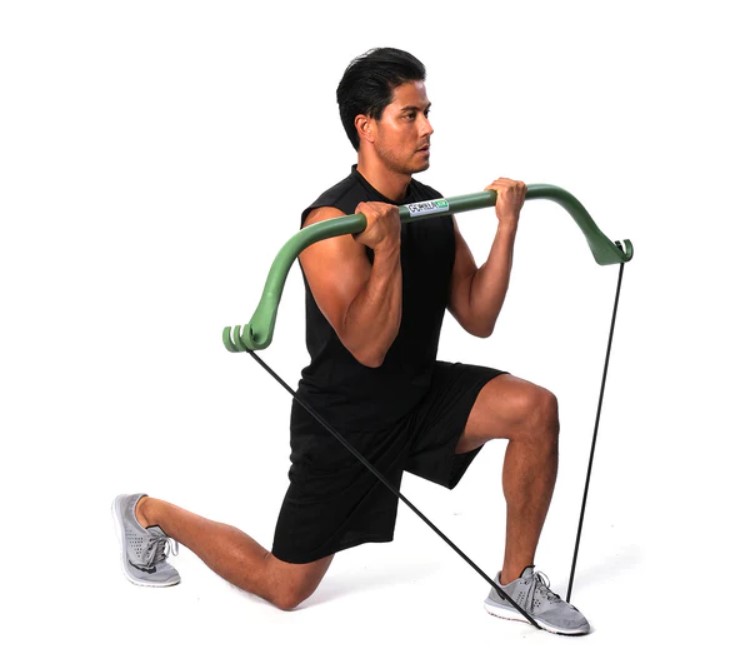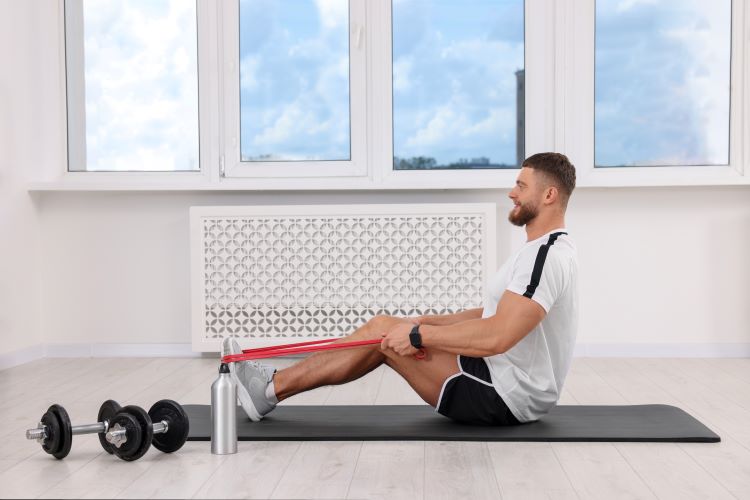Both dumbbells and resistance bands are versatile workout tools, but which is best to invest in?
If you were setting up a decent home fitness studio, you’d ideally have both dumbbell sets and the best resistance bands to hand, to give you the widest possible range of options for full-body strength work.
However, we don’t all have the space or cash to set up a pro-level gym at home. And if we’re starting out, the first choice we’ll most likely need to make is this: dumbbells vs resistance bands?
Both can offer plenty of resistance and versatility for a full-body workout, but that is where their similarities end. Cost, storage space, weight, longevity, safety and precision all differ between dumbbells and resistance bands, and are all factors to consider if you’re choosing between the two.
Dumbbells vs resistance bands: price comparison
There is no denying that dumbbells are more expensive than resistance bands. Although some band systems like the Gorilla Bow Travel can cost as much as $250 (£200), that’s probably the least you’ll be looking to spend on a set of dumbbells with a good range of weights.
In fact, adjustable dumbbells or their equivalent range in fixed dumbbells can cost more than three times that.

You can buy simple resistance bands like the Amazon Basics for under a tenner and they do the job well enough. And with three bands to a set you can double or triple up for extra resistance. With dumbbells, if you want more weight… you need to buy more weights.
On the flipside, while dumbbells are more expensive, fixed dumbbells in particular are robust and could feasibly last a lifetime. Resistance bands can stretch and lose elasticity over time, and cheaper TPS ones could even tear eventually.
Dumbbells vs resistance bands: storage and portability
It goes without saying that resistance bands have a negligible weight compared to dumbbell sets, the advantage being they can be stored and carried around in a gym bag or kept in a drawer at home. That means a quick resistance fix whenever the opportunity arises.
Dumbbells, however, are by their very nature the opposite of portable. Even stashing a lightweight set like the 2.5kg DOMYOS Corength Hex dumbbells in your backpack is liable to do more harm than good. And a decent range of dumbbells is going to take up a significant amount of floorspace, or require a rack to house them.
Dumbbells vs resistance bands: the weight issue
With a wide range of available resistances, as well as the option of using multiple bands simultaneously, the biggest resistance bands can replicate the resistance most people would want to use. The Gymproluxe Band Bar set, for example, packs up to an incredible 264lb / 120kg of resistance. Bands are more useful at the lower resistance range, too, for stretching, warming up or for rehab exercises.
Where dumbbells excel is their precision. You know exactly the weight you are lifting, whereas with bands you are working within a range. And if you have a set of adjustable dumbbells like the PowerBlock Sports Series you have everything you need in one relatively compact set.
With resistance band sets you can add or remove bands, but much of the time you are calculating perceived effort and that’s harder to figure out the more fatigued you become.

One final factor to consider is safety when using dumbbells and resistance bands. With weights you are loaded throughout the entire movement of your exercise. (A dumbbell deadlift, for example, can compromise your back in the lowest position.)
With resistance bands, however, the load changes depending on where you are in your movement, and on the amount of exertion. Bands also alleviate joint pressure and negate the chance of dropping a heavy steel object on your toe.
The bottom line is dumbbells vs resistance bands is a matter of personal choice. You can definitely get stronger and build muscle with resistance bands. But if you want to lift increasingly heavy weights you will hit a ceiling with bands eventually.
That being said, resistance bands shouldn’t be dismissed as just a warm-up or rehab tool – just check out our roundup of the best resistance band exercises. They can still offer serious resistance, and their low price and portability means they are more accessible piece of kit.
Bands or dumbbells? A PT’s opinion:
“Resistance bands offer a unique and advantageous profile compared with dumbbells, says personal trainer and physiotherapist Jonathan Cooke, who runs JCFitness. “They increase in tension when being stretched, thereby applying more tension to the working muscle in the contracted phase of the lift.
“Resistance bands are arguably more versatile than dumbbells too. They are transportable, relatively easy to use, and can provide an equivalent stimulus to dumbbells.
“However, the tension with resistance bands changes depending on band thickness and distance from anchor point. Dumbbells are therefore easier to objectively determine applied load and easier for use as a metric for load progression.”
Related content:








